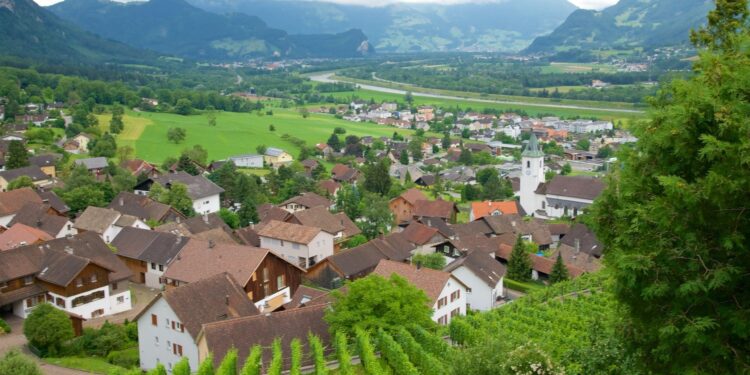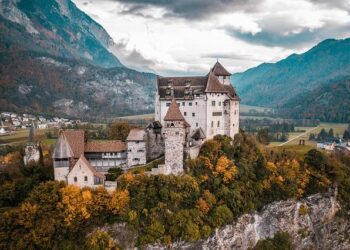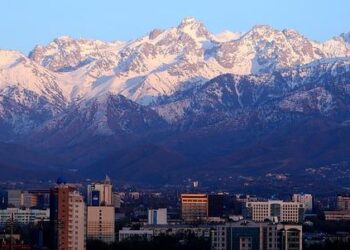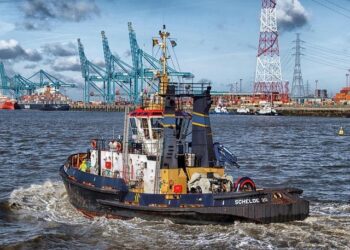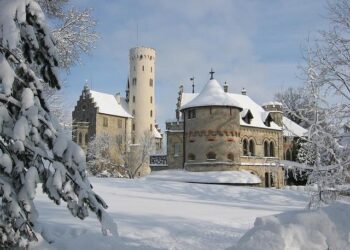Nestled in the heart of the Alps, Liechtenstein stands out as one of Europe’s most intriguing nations. Despite being the wealthiest country on the continent by GDP per capita, this diminutive principality operates without a commercial airport or its own currency. As travelers and investors alike take note of Liechtenstein’s unique blend of economic prosperity and geographic constraints, its unconventional approach continues to challenge traditional notions of nationhood and connectivity in modern Europe. This article explores how Liechtenstein thrives at the crossroads of innovation, diplomacy, and tradition, making it a remarkable destination and economic powerhouse.
Liechtenstein’s Economic Success Story Amidst Unique Geographical Constraints
Despite its diminutive size and lack of traditional infrastructure such as an airport, Liechtenstein has carved out an impressive economic niche within Europe. Strategically nestled between Switzerland and Austria, this alpine microstate leverages its highly skilled workforce, advanced manufacturing sector, and favorable tax policies to fuel its prosperity. The absence of its own currency has not hindered commerce either, as the country uses the Swiss franc, benefiting from the stability and international trust associated with it. Liechtenstein’s economy thrives on precision industries including high-tech manufacturing, financial services, and a growing creative sector, illustrating how adaptability can upend conventional geographic limitations.
Key drivers behind Liechtenstein’s economic resilience include:
- Robust SME (small and medium enterprise) ecosystem with innovative design and engineering focus
- Close economic integration with Switzerland enabling seamless trade and financial transactions
- Progressive fiscal policies that attract global investors while maintaining strong social welfare
| Economic Indicator | Data |
|---|---|
| GDP per Capita | $180,000 |
| Unemployment Rate | 1.5% |
| Financial Sector Contribution | 40% |
| Exports (Machinery & Electronics) | 70% |
Exploring Travel Options to and Within Liechtenstein Without an Airport
Without its own airport, Liechtenstein offers travelers a unique challenge and an opportunity to experience seamless cross-border transit in the heart of Europe. Visitors typically arrive via nearby international airports such as Zurich Airport in Switzerland, just about 100 kilometers away, or Innsbruck Airport in Austria. From these hubs, efficient and well-coordinated public transport options, including trains and buses, make the approach to the principality smooth and accessible. The Swiss Federal Railways connect Zurich to Sargans, the gateway station just across Liechtenstein’s border, where regional buses readily await to shuttle visitors into the charming towns of Vaduz and Schaan.
Once inside Liechtenstein, exploring the compact nation is made simple by its reliable network of buses and taxis. The country’s public transport system, mainly operated by PostBus Liechtenstein, covers key routes serving not just the capital but also more remote alpine villages and hiking trailheads. Key travel tips include:
- PostBus Liechtenstein: Frequent, punctual services connecting main towns with scenic stops.
- Bike Rentals: A popular, eco-friendly way to navigate the principality’s picturesque valleys and hills.
- Walking Trails: Extensive marked paths offer a pedestrian-friendly option that doubles as sightseeing.
- Car Rentals: Convenient for those who wish to explore at their own pace, with nearby rental services available across the border.
| Transport Mode | Frequency | Ideal For |
|---|---|---|
| PostBus Services | Every 30-60 mins | City-to-city transit |
| Bike Rentals | Available daily | Exploring nature trails |
| Walking Routes | Open all year | Leisurely sightseeing |
| Car Rentals | On demand | Off-the-beaten-path touring |
Liechtenstein does not have its own airport, so most travelers arrive via nearby international airports such as Zurich Airport (Switzerland) or Innsbruck Airport (Austria). From these airports, you can take trains and buses-specifically, Swiss Federal Railways trains from Zurich to Sargans, followed by regional buses into Liechtenstein’s towns like Vaduz and Schaan.
Inside Liechtenstein, the main transport options include:
- PostBus Liechtenstein: Frequent, reliable bus services connecting the main towns and scenic spots, running every 30-60 minutes.
- Bike Rentals: Available daily and popular for eco-friendly travel through valleys and hills.
- Walking Routes: Open year-round with many marked trails for sightseeing on foot.
- Car Rentals: Available on demand, ideal for exploring remote areas at your own pace, with rental services located just across the border.
This network offers a smooth and convenient way to experience the compact principality without needing a car, allowing easy access to urban centers, alpine villages, and hiking trailheads.
Must-See Attractions and Local Experiences in Europe’s Wealthiest Microstate
Vaduz Castle, perched atop a hill overlooking the capital, is an emblem of Liechtenstein’s royal heritage and a must-visit site. Though closed to the public, the castle’s exterior and surrounding vineyards offer a breathtaking panorama of the Rhine Valley and Alpine peaks. Nearby, the Liechtenstein National Museum immerses visitors in the principality’s evolution from a medieval state to one of Europe’s richest microstates, while the modern art exhibitions at the Kunstmuseum Liechtenstein provide a striking contrast with their contemporary flair and international collections.
For a taste of local culture, explore the quaint villages of Triesenberg and Balzers where traditional customs thrive amidst stunning natural landscapes. Outdoor enthusiasts can take advantage of the extensive hiking and cycling trails crisscrossing the alpine terrain, including the famous FĂĽrstensteig Trail, known for its dramatic cliffs and sweeping views. Food lovers will enjoy sampling regional specialties such as Ribel – a corn-based dish – at cozy mountain inns, ensuring an authentic culinary experience reflective of Liechtenstein’s unique blend of Swiss and Austrian influences.
Wrapping Up
In a continent where economic prowess often aligns with expansive infrastructure and sovereign monetary systems, Liechtenstein stands out as a compelling exception. Its unique blend of affluence, strategic partnerships, and cultural heritage continues to challenge conventional notions of nationhood and economic success. As travelers and analysts alike turn their eyes toward this alpine principality, Liechtenstein remains a testament to how innovation and cooperation can thrive without the traditional trappings of airports or an independent currency, solidifying its place on Europe’s economic map.


